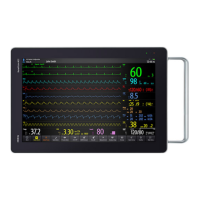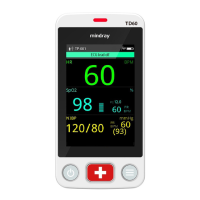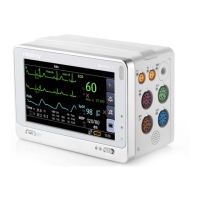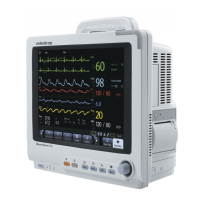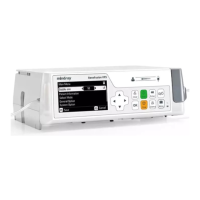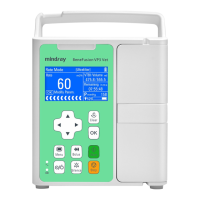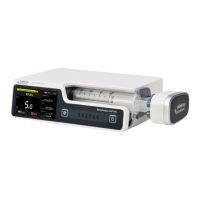BeneVision N1 Patient Monitor Operator’s Manual 22 - 3
22.4.5 Checking the Battery Information
To check the battery information, follow this procedure:
1. Select the
Main Menu quick key →from the System column select Maintenance → input the required
password
→ select .
2. Select the
Battery Information tab.
22.5 Charging the Battery
To optimize performance, a fully (or nearly fully) discharged battery should be charged as soon as possible. The
battery can be charged in any of the following methods:
■ Method 1: the monitor is connected to the AC adapter or Dock.
■ Method 2: the monitor is in use with a host monitor.
■ Method 3: the monitor is in use with the Transport Dock.
For method 1 and method 3, the battery is charged regardless of whether or not the monitor is currently turned
on. For method 2, the host monitor must be powered on for the N1 monitor's battery to charge.
22.6 Maintaining the Battery
22.6.1 Conditioning the Battery
The performance of the battery deteriorates over time. You should condition the battery every three months.
To condition a battery, follow this procedure:
1. Disconnect the monitor from the patient and stop all monitoring and measuring procedures.
2. Turn off the monitor, and connect the monitor to the external power source.
3. Allow the battery to be charged uninterruptedly until it is fully charged.
4. Disconnect the monitor from the external power source, and turn on the monitor.
5. Allow the monitor to run on the battery until the battery is completely depleted and the monitor automat-
ically shuts down.
6. Fully charge the battery again for use or charge it to 40 – 60% for storage.
• If the battery is not conditioned for a prolonged time, its charge indication may not be accurate and
you may wrongly evaluate the remaining battery runtime.
• Do not use the monitor to monitor a patient during battery conditioning.
• Do not interrupt battery conditioning.
22.6.2 Checking Battery Performance
Life expectancy of a battery depends on how frequent and how long it is used. When properly used, the lithium-
ion battery has a useful life of approximately two years. If improperly used, its life expectancy can be shorter. We
recommend replacing the lithium-ion battery every two years.
The performance of a rechargeable battery deteriorates over time. You should check the battery performance
every two months or if you question it is meeting the product specifications.
See steps 1 to 5 of
22.6.1 Conditioning the Battery to check battery performance. The operating time of the
battery reflects their performance directly. If the operating time of a battery is noticeably shorter than that
stated in the specifications, the battery may have reached its service life or be malfunctioning. If the battery
performance meets the requirement, fully charge the battery again for use or charge it to 40 – 60% for storage.
• Battery operating time depends on equipment configuration and operation. For example, high
display brightness or measuring NIBP repeatedly will shorten the battery operating time.

